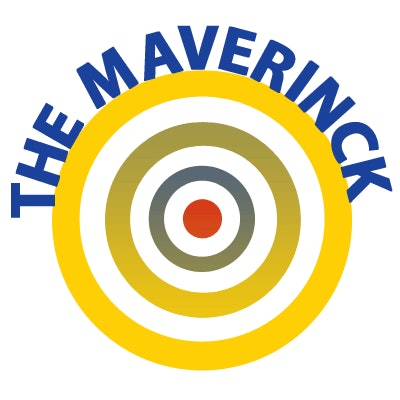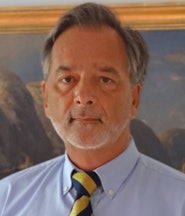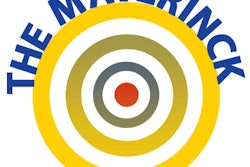
Last year I wrote about my worries concerning the reports on scientific research published by the lay media -- even by those commonly considered serious and reliable.1 As an example, I chose the articles of two science writers in German dailies about side effects of gadolinium contrast agents. They were mixing facts and opinion in a simplistic way and making sweeping judgments.
 Dr. Peter Rinck, PhD, is a professor of diagnostic imaging and the president of the Council of the Round Table Foundation (TRTF) and European Magnetic Resonance Forum (EMRF).
Dr. Peter Rinck, PhD, is a professor of diagnostic imaging and the president of the Council of the Round Table Foundation (TRTF) and European Magnetic Resonance Forum (EMRF).Even for well-respected publications, facts in science or research often are of less interest than a good story. Cautiously phrased sentences summarizing the contents of "the latest scientific paper" seem not to attract readers. The concoction of selected facts, wishful thinking, and opinion as well as negative sensationalism sells; bad news can be good news for publishers. This can be expected from newspapers and TV, or internet media known for and dedicated to yellow journalism, but not from the leading authoritative publications.
A good tale trumps facts -- one only needs an irresistible headline.
It is sad when trailblazing scientific research is being distorted in this way. However, it is a far more serious issue when faulty research results are taken up by the media in a sensationalist manner, and ends up having harmful, even catastrophic consequences, for patients and the general public, possibly creating a long-lasting negative effect on medical care.2,3
Some science journalists have a scientific background, but this does not mean they necessarily can cover science and research for the media -- they need good writing skills and they have to be able to write in an easily understandable, uncomplicated way, be precise, and be good communicators of scientific studies and results to a large public. Few scientists or researchers without a solid journalistic background have this ability.
What makes a good journalist?
Good science journalists possess a broad mind, are good readers and listeners, and know their target audience. They do not rely barely on press releases, but verify facts, vet sources (even if they must read complete scientific papers), have the capability to see through planted stories and possible commercial or political goals, and avoid people who try to steer stories in one direction.
I didn't want to use a recent example -- so as not to step on the toes of people whom we meet at conferences and society meetings of our time. Let's pick a well-known 40-year-old example: the coverage of Dr. Raymond Damadian's tumor detection machine.
On 21 July 1977, Lawrence K. Altman of the New York Times wrote:
"A New York City medical researcher announced yesterday at a news conference that he had developed 'a new technique for the nonsurgical detection of cancer anywhere in the human body.' ... after repeated questioning, Dr. Damadian said that he retracted as "not accurate" the contention that his device had diagnosed cancer anywhere in the body. ...
"The manner of Dr. Damadian's announcement was rather unusual. Ordinarily, researchers report their findings at a medical conference or through scientific journal articles. Sometimes, a medical center and its researchers hold a news conference in conjunction with publication of a journal article. ...
"Dr. Damadian took the unusual step of retaining [a] public relations and advertising firm which chartered a bus to bring representatives of the news media and financial institutions to Downstate Medical Center from New York."4
Good public relations
Negative media evaluations can still be good public relations as this famous "radiological" example revealed. Scientific offenders are not necessarily cast out. Professional societies try to avoid controversies, not exposing colleagues or even friends -- nor people or companies with a strong political or financial influence. The truth is being "balanced."
Damadian became famous and rich because he repeated over and over again what outstanding scientific contributions he had made -- but through platforms he created and channels he controlled. He avoided responsible media.
Commonly, the blame is put on journalists and publishers, the Murdochs of our time. Irresponsible science writing can be caused by scientific illiteracy or a lack of appropriate experience in journalists and, of course, by the newspaper publishers' understandable interest in selling their product; there are also scientific journal publishers and editors who are immodestly greedy.
There is no easy solution. The blame for misleading the public should be shouldered equally by journalists, scientists, journal editors, and research institutions. Usually the topic is swept aside. However, for some months "fake news" and "alternative truths" are the talk of the press and state administrations. It's nothing new; basically, lies and disinformation are as old as mankind.
Recognizing and fighting them is important -- in particular in medicine and radiology. They have to be brought up and discussed already at medical school to expose students to the actual spectrum of medical life beyond daily hospital routine. We need analytical and critical radiologists.
Dr. Peter Rinck, PhD, is a professor of diagnostic imaging and the president of the Council of the Round Table Foundation (TRTF) and European Magnetic Resonance Forum (EMRF).
References
- Rinck PA. Adding fuel to the flames: Gadolinium -- the German follow-up. Rinckside. 2016; 27(1):1-3.
- Traish AM, Vance JC, Morgentaler A. Overselling hysteria: The role of the media and medical journals in promoting questionable risks-a case study of the testosterone controversy. EMBO Rep. 2017;18:11-17.
- Moore A. Bad science in the headlines. Who takes responsibility when science is distorted in the mass media? EMBO Rep. 2006;7:1193-1196.
- Altman LK. New York researcher asserts nuclear magnetic technique can detect cancer, but doubts are raised. The New York Times. 21 July 1977:18.
The comments and observations expressed herein do not necessarily reflect the opinions of AuntMinnieEurope.com, nor should they be construed as an endorsement or admonishment of any particular vendor, analyst, industry consultant, or consulting group.



















